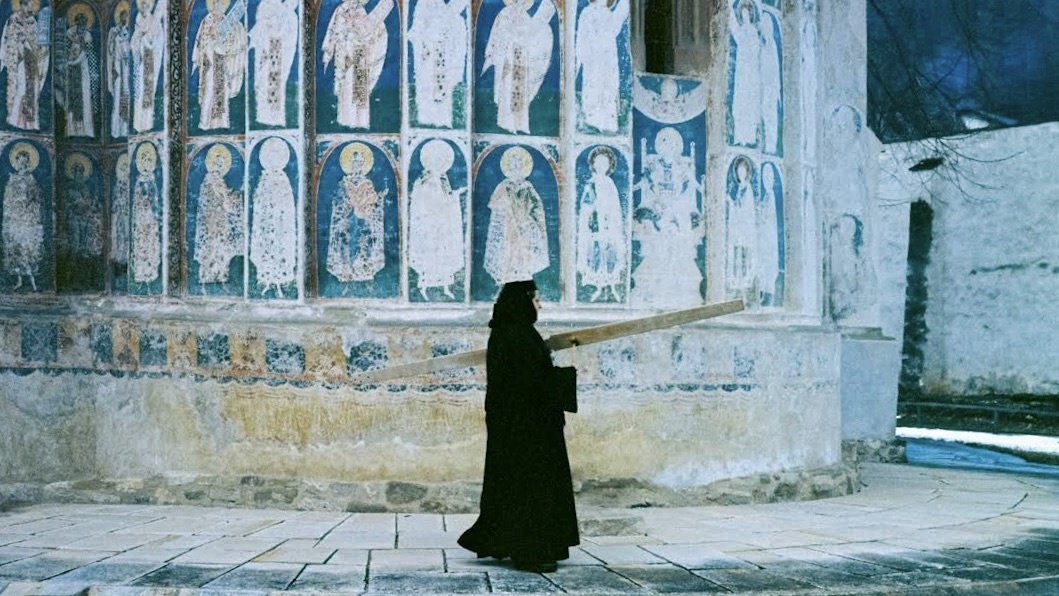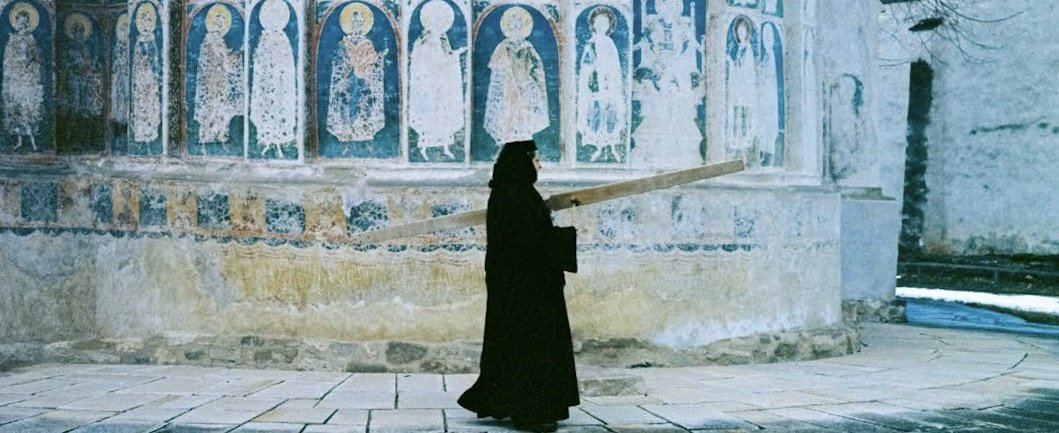

To Sleep
Bio Valeputna
This self-service chalet, located in Valea Putnei, Suceava county, offers both relaxation services and fun activities. Those who want to wind down can enjoy the modular pool or the outdoor sauna, custom made in Finland. If you’re more eager to discover the surroundings and local culture, try cycling on the local trails (Bio Valeputna provides mountain bikes, even for children) or taking lessons in egg painting, weaving, or embroidery from local artists. Valea Putnei is especially known in the region for its delicious smoked trout – the owners can take you fishing to a nearby pond and teach you how to prepare your catch in a unique way.
Domeniul Cerbilor
Despite being quite close to civilization, the Domeniul Cerbilor chalet has a fairytale-like atmosphere: wood burning in the fireplace; traditional, organic dishes; the scent of pine trees right outside your window; and sometimes, deer walking by in the evenings. This family-owned chalet in Delnița village also offers all the amenities that discerning travelers require, including a wine cellar, a private sports court, a terrace, a children’s playground, and a modern arbor.
Hai La Saivan BioRetreat & Farm
Rustic meets cozy and comfortable at the Hai La Saivan BioRetreat & Farm. This picturesque accommodation is made up of three traditional wooden houses, dating back to the 1910s, 20s and 30s. They were relocated from different villages in Bucovina and rebuilt on top of a mountain plateau near Prisaca Dornei village for the spectacular views. You will find horses, cows, sheeps, goats, chickens, rabbits, pigs, cats, and dogs on the property, to the delight of children. Your own pets are more than welcome too. As for the food, all eggs, milk, cheese, meat, honey and palinka (traditional fruit brandy) that you will receive come straight from the farm, and are 100% organic.
Vatra Boierească
A mansion and three traditional wooden houses make up the Vatra Boierească domain in Dealul Salinei, Cacica. The interiors reflect the simple, authentic life in Bucovina, but also offer all the modern amenities you need to relax – TV, shower, fridge, espresso machine. Fishing aficionados can have a pond on the property, and there’s a sheep pen nearby where you can taste delicious local cheeses. Children can take a cart ride or have fun at the private playground. And if you want to relax, sip a glass of wine and enjoy the splendid scenery. You can also try the traditional hot tub or the sauna.
UNESCO Monasteries
Sucevița Monastery
A true testament of the Moldavian classical art, Sucevița Monastery (situated in the village with the same name) was built at the end of the 16th century and is, chronologically, the last of the 22 painted churches of Bucovina. High walls and defensive towers surround the monastery, making it resemble a fortress. Its gorgeous frescoes were painted by two brothers who used a combination of emerald green, brilliant reds, and blues to depict biblical scenes. Don’t miss its most magnificent painting, The Ladder of Virtues, on the northern exterior wall. The western exterior wall of the church is not painted because, according to legend, work stopped after one of the painters fell from the scaffolding and died. The monastery is run by nuns who restore old wooden icons, religious books, and embroideries in their workshops.
Voroneț Monastery
Often called “the Sistine Chapel of the East” for its depiction of The Last Judgment on its exterior walls, Voroneț Monastery is the most renowned of the Bucovina monasteries. Dating back to the end of the 15th century, when it was built by the order of Stephen The Great, the monastery became world-famous for its special hue of blue called “Voroneț blue.” The composition of the paint was a mystery for centuries, but recent lab tests revealed that the painters used dust from crushed azurite to obtain the color. You can also request a guided tour by the nuns. Outside the monastery, there’s a small souvenir fair where you can buy traditional clothing, pottery, food, or beverages.
Moldovița Monastery
With remarkably well-kept frescoes, the Moldovița Monastery was built in 1532 by Petru Rareș, the illegitimate son of Stephen the Great. Situated in the Vatra Moldoviței commune, the religious building is famous for its gold and deep blue paintings on the exterior walls. The two main highlights are the frescoes that depict the Siege of Constantinople and the Tree of Jesse, representing the genealogy of Jesus Christ. There is also a museum on site where you can see the throne of Petru Rareș, as well as ancient books, icons and even a 500-year-old veil.
Humor Monastery
If Sucevița Monastery is known for its shades of green and Voroneț for its unique shade of blue, Humor Monastery’s chromatic signature is reddish-brown. Built in 1530, the monastery is smaller than the other seven painted churches in the UNESCO Heritage, and doesn’t have a steeple on its cross-shaped roof, indicating that it was erected by a nobleman, not a prince. Nevertheless, its Byzantine frescoes are a masterpiece of history and culture well worth seeing. Look for the one illustrating the Return of the Prodigal Son and a humorous portrayal of the devil as a woman. You can climb atop the bell tower for a stunning view of Mănăstirea Humor and the surrounding village.
Arbore Monastery
Receiving less attention and fewer tourists than the other painted monasteries in Bucovina, the Arbore Monastery makes for a more private and peaceful visit. The edifice was built in 1503 by local nobleman Luca Arbore. It actually took only five months to erect, but four decades to paint. There’s a small scale that allows you to admire the frescoes up close and wonder at their details. Inside one of the three chambers of the church, you can see Arbore and his family’s tombs, as well as a votive painting of them offering the church to God. Unfortunately, the passing of time and the elements of nature have destroyed most of the paintings on the outside walls of the church, but you can still admire the Genesis scene on the western wall.
Nature
Rodna Mountains National Park
The second largest national park in Romania, the Rodna Mountains National Park, spans over 465 square kilometers across three different counties: Bistrița Năsăud, Maramureș, and Suceava. If you’re seeking to explore offbeat trails through breathtaking scenery, this is the place for you. Don’t miss Cascada Cailor (The Horse’s Waterfall), the largest waterfall in Romania; it’s a 7.2-kilometer out-and-back trail starting from Borșa. Other natural attractions in the area are the spectacular caves, especially Grota Zânelor and Jgheabul lui Zalion, as well as the Lala Mare glacial lake.
Slătioara Secular Forest
Dubbed “Rarău’s wooden cathedral,” the Slătioara Secular Forest – located on the eastern slope of the Rarău massif – is Europe’s largest virgin softwood forest and the second oldest of the continent. This spectacular green reserve is included in the UNESCO World Heritage List. Take a walk through this pristine forest and admire the incredible flora and fauna. You’ll walk through some of the oldest trees in Romania and even in Europe (some of them being around 400 years old). Several species of butterflies, bugs and moss have been discovered here. You can hike up to the alpine pasture above the forest, but make sure to have hiking boots and trekking poles as the trail is quite steep.
Călimani National Park
If you’re into long hikes in the wilderness, dense forests and amazing volcanic landscape, Călimani National Park is a must-visit. The Călimani are the youngest and highest volcanic mountains in Romania, with Pietrosu peak rising at 2,100 meters. This 24,566 hectares natural park abounds in old volcanic craters, Swiss stone pines and juniper trees. Among the main natural attractions are the Iezer Lake Reserve, the Sulfur Quarry (home of Europe’s largest inactive caldera), the Tihu Waterfall, and a geological reserve with some weirdly shaped rocks called “the 12 Apostles.” If you travel here in June, don’t miss the blooming of the mountain peony on the Călimani Park’s high area.
Rarău Mountains
A great destination for easy hikes, the Rarău Mountains offer travelers marvelous landscapes, old forests, and geological preserves. The jewel in Rarău’s crown is Pietrele Doamnei, also known as the Lady’s Stones, a rock formation made of Mesozoic limestone. According to the legends, it is here that Lady Helen, the wife of Moldovian ruler Petru Rareș, hid with her son from the Tartar invasion. You can easily reach the Lady’s Stones from Câmpulung Moldovenesc to Cabana Rarău (1,538 meters altitude) via a spectacular 14-kilometer road. From the cabin, you can reach the rocks on a one-kilometer trail.
Mountain Trails
Via Transilvanica
Via Transilvanica is a newly developed, long distance trail that starts in Putna, Bucovina, continues through Transylvania and ends in Drobeta Turnu-Severin, in Oltenia. It is the Romanian version of Santiago de Compostela. It consists of 1,400 kilometers of trails which can be done in stages by foot, cycling, or even horseback riding. It is adapted to every traveler and aims to revitalize rural areas and promote eco-tourism.
More Tips
Personalized Tours
To experience the best Romania has to offer, we encourage you to reach out to Ionuț Maftei, founder of Bike in Time. He offers carefully curated and guided tours through biking, hiking, and snowshoeing throughout the country. His tours vary in duration (they can last a single day or even a week). In recent years, Ionuț has been involved in national projects to develop cycling infrastructure and tourism. Bike in Time has also become a cycling policy auditor and a cycling routes evaluator, certified by the European Cyclists Federation. By exploring with Ionuț, you will also be able to discover lesser-known spots, cuisines, vineyards, and secluded villages. In Bucovina, he can suggest trails tailored to your needs: for an easy hike, he recommends the 5 kilometer (about two and a half hour) trail around Sucevița Monastery.
Mountain Trail Website
No matter what outdoor activities you’re into (hiking, biking, climbing, trail running, etc.) – we recommend you visit Muntii Nostri, a platform dedicated to outdoor activities throughout Romania, consisting of detailed routes. You can choose a trail based on the region, difficulty level, and type of activity.
last updated: summer 2024